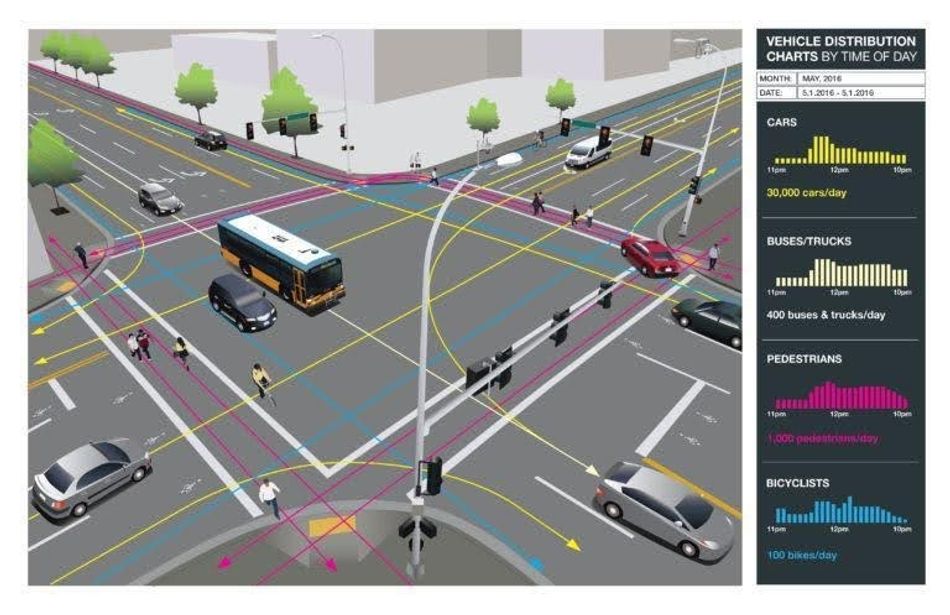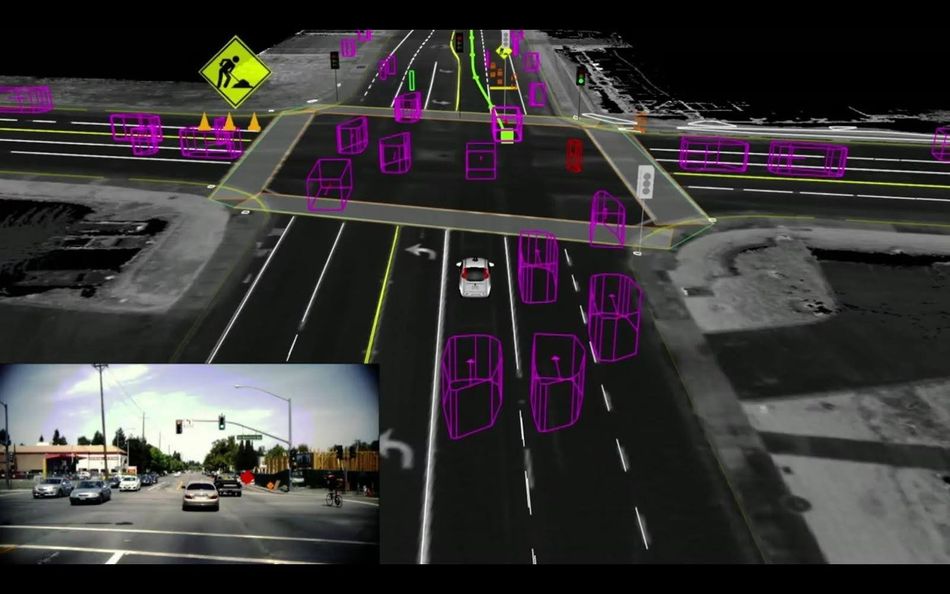Engineer training: Mastering Machine Learning for Critical Applications
The upcoming "Machine Learning for Safety Experts" training by SAE and Fraunhofer IKS in Munich on October 22-23, 2024 is a timely initiative. It will address this crucial skill gap and ensure engineers are well-equipped to handle the intricacies of safe Machine Learning applications.
| SAE will host a two-day training course, "Machine Learning for Safety Experts," with their partner Fraunhofer IKS on October 22-23, 2024, in Munich. The course aims to equip safety engineers with the knowledge to integrate Machine Learning into safety-critical applications while adhering to standards like ISO 26262 and ISO 21448. Using established methods, participants will learn to develop safety lifecycles, derive safety requirements, and address Machine Learning insufficiencies. The training is essential for engineers looking to enhance their skills in ensuring the safety of Machine Learning based functions. Read more or register for the event here. |
Machine Learning (ML) is increasingly pivotal across various engineering disciplines, transforming problem-solving and innovation capabilities. In the automotive sector, Machine Learning drives advancements in autonomous driving systems, enhancing vehicle safety and functionality. Healthcare benefits from Machine Learning through improved diagnostic accuracy and patient care personalization, while industrial automation optimizes efficiency and predictive maintenance, reducing downtime and costs.
However, as Machine Learning becomes integral to engineering solutions, the imperative for engineers to continuously advance their understanding of Machine Learning safety grows. Integrating Machine Learning into safety-critical applications presents a unique challenge, especially in adhering to stringent safety standards.
The ISO 26262 and ISO 21448 standards are particularly pertinent, focusing on automotive safety and the safety of intended functionality, respectively. These standards guide engineers in developing, validating, and certifying Machine Learning based systems to ensure they meet rigorous safety requirements.
The upcoming "Machine Learning for Safety Experts" training by SAE and Fraunhofer IKS in Munich is a timely initiative. It will address this crucial skill gap and ensure engineers are well-equipped to handle the intricacies of safe Machine Learning applications.
Ensuring Safety in Machine Learning Applications
Integrating Machine Learning with established safety standards, particularly in sectors like automotive, where safety is paramount, presents significant challenges. The complexity of Machine Learning systems, which often behave unpredictably, necessitates adherence to robust safety protocols to mitigate risks not traditionally accounted for in older standards.
Overview of Relevant Safety Standards
Both ISO 26262 and ISO 21448 are critical in guiding the integration of Machine Learning into safety-critical applications. They provide a structured framework for evaluating and managing the risks associated with Machine Learning applications in automotive and other engineering fields. This ensures that vehicles and other engineered systems become more autonomous and remain safe for end-users under all conditions.
The interaction between these standards and Machine Learning development is a growing area of focus as engineers seek to align cutting-edge technological advancements with rigorous safety requirements. Ensuring the safety of Machine Learning applications requires a balance between innovation and stringent compliance with these evolving safety standards.
Challenges of Integration with Safety Standards
One of the principal standards, ISO 26262, focuses on functional safety for all road vehicles, highlighting the need for risk assessment and mitigation strategies throughout the product lifecycle. This standard has been crucial in addressing risks associated with electrical and electronic systems in vehicles. However, the integration of Machine Learning brings new dimensions to these challenges because Machine Learning systems can fail in ways that are hard to predict with traditional safety analysis techniques.
ISO 21448, also known as Safety of the Intended Functionality (SOTIF), complements ISO 26262 by addressing safety risks in vehicle operations that occur without system failures. This includes scenarios where vehicles perform as designed but fail to handle unexpected real-world conditions, such as unusual weather or road obstacles. SOTIF guides how to design, verify, and validate Machine Learning systems to ensure they behave safely under various operating conditions.
SAE Course
The "Machine Learning for Safety Experts" course by SAE and Fraunhofer IKS is designed to train safety engineers in integrating machine learning into safety-critical applications.
Scheduled for October 22-23, 2024, in Munich, this training focuses on applying fundamental safety principles of Machine Learning across various applications. Participants will learn to develop Machine Learning safety-related functions, derive safety requirements, and address Machine Learning insufficiencies through a comprehensive toolkit of methods. This course is crucial for engineers aiming to enhance the safety of Machine Learning functions in automotive and other critical sectors.
For more details, Check the course details here.

Key Learning Objectives of the Training
The Machine Learning for Safety Experts training is designed to provide safety engineers with the essential knowledge and skills to integrate Machine Learning (ML) into safety-critical applications, ensuring compliance with standards like ISO 26262 and ISO 21448.
Understanding the Impact of Machine Learning on Functional Safety
One of the primary learning outcomes is recognizing the profound impact of Machine Learning on functional safety. Participants will gain insights into how Machine Learning can influence the safety lifecycle of systems, especially in the context of automotive safety. This includes understanding the potential risks and the necessity of robust safety arguments to mitigate these risks effectively.
Applying Machine LearningSpecific Safety Measures
The course emphasizes the application of Machine Learningspecific safety measures. This includes learning about the methodologies and tools tailored to address the unique challenges of Machine Learning algorithms. Participants will be trained on runtime monitoring, robustness testing, and other techniques to ensure that Machine Learning systems perform reliably under diverse conditions, aligning with the stringent requirements of ISO 26262 and SOTIF.
Developing Safety Requirements for Machine LearningBased Systems
A crucial part of the training is the development of safety requirements specific to Machine Learningbased systems. Engineers will learn to derive and implement safety requirements from a system-level perspective, ensuring that Machine Learning components meet the necessary safety standards. This involves comprehensive training on validating and verifying Machine Learning systems to ensure they adhere to the safety protocols outlined in ISO 26262 and ISO 21448.
This training equips engineers with the expertise to navigate the complexities of integrating Machine Learning into safety-critical systems, making it an essential program for those looking to stay ahead in the rapidly evolving field of safety engineering.
Practical Benefits of the Training
The "Machine Learning for Safety Experts" training is invaluable for engineers addressing prevalent Machine Learning safety challenges in real-world applications. This training equips participants with the necessary skills and knowledge to effectively integrate Machine Learning into safety-critical systems, ensuring adherence to stringent safety standards like ISO 26262 and ISO 21448. The course will discuss Machine Learning in three core application areas of the Automotive Industry, Healthcare, and Manufacturing.

Who should attend?
The "Machine Learning for Safety Experts" training course is tailored for automotive safety engineers at all experience levels who must assess and ensure the safety of functions and systems incorporating Machine Learning (ML). This course is especially relevant for professionals working with safety-critical applications in the automotive industry, where compliance with standards such as ISO 26262 and ISO 21448 is crucial.
Course prerequisites:
Pre-existing Safety Knowledge: Participants should have a solid understanding of general safety principles and practices.
Experience with Safety Standards: Familiarity with applying ISO 26262 (functional safety for road vehicles) and ISO 21448 (safety of the intended functionality) is essential.
Basic Understanding of Machine Learning Techniques: A fundamental grasp of Machine Learning concepts and techniques is required to benefit fully from the training.
Expert Instructors and Their Credentials
The training is led by two distinguished experts from Fraunhofer IKS:
Karsten Roscher
With over a decade of research experience in connected mobility, advanced driver assistance systems, and Machine Learning for computer vision and communication systems, Karsten is a leading advocate for safe intelligence. He heads the Dependable Perception & Imaging department at Fraunhofer IKS and is actively involved in German and European standardization bodies. His extensive work developing reliable perception systems across automotive, rail, industrial automation, and medical domains highlights his deep expertise in integrating Machine Learning with safety standards.
Philipp Schleiss
Philipp has been a pivotal figure at Fraunhofer since 2013, focusing on increasing the dependability of embedded and autonomous systems. He leads the department in systems safety engineering and specializes in tool-based design automation, continuous safety assurance, and real-time guarantees for automated driving. Philipp's contributions to advancing safety standards and his role in developing methods for the safe implementation of Machine Learning in autonomous systems make him an invaluable resource for course participants.
These instructors bring a wealth of knowledge and practical experience, ensuring participants gain theoretical insights and actionable skills to apply Machine Learning safety measures in their professional practices effectively.
Find out more information here.
Conclusion
Staying current in Machine Learning safety practices is crucial in today's rapidly evolving technological landscape. The "Machine Learning for Safety Experts" training by Fraunhofer IKS provides engineers with the tools and knowledge needed to integrate Machine Learning into safety-critical applications effectively. Continuous learning and professional training are essential to keep pace with technological advancements and ensure the safe deployment of Machine Learning systems in various industries. This course equips participants to lead their teams confidently, ensuring that safety remains a top priority as they leverage the power of advanced Machine Learning techniques.
References
https://www.iks.fraunhofer.de/en/events/machine-learning-for-safety-experts1.html
https://saemobilus.sae.org/courses/machine-learning-safety-experts-c2208
https://www.iks.fraunhofer.de/en/services/ai-act-high-risk-systems.html
https://www.frontiersin.org/articles/10.3389/fcomp.2023.1132580/full
https://www.ptc.com/en/blogs/alm/iso-26262-vs-sotif-iso-pas-21448-whats-the-difference



